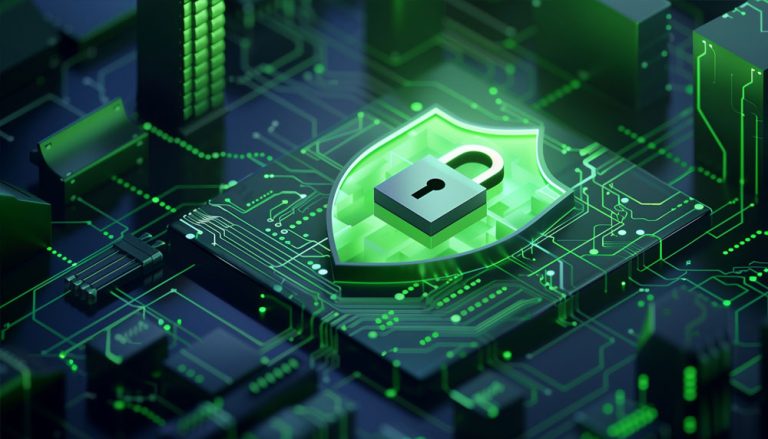
Last updated on April 7, 2025
Future-Proofing Cyber Security in the Post-Quantum Era: Quantum Resistant Cryptography
The backbone of today’s digital security infrastructure relies on classical computers struggling with complex mathematical computations. These algorithms, including RSA and ECC (Elliptic Curve Cryptography), safeguard secure online communication, including emails and banking transactions. However, the inception of quantum computing threatens all of this. Today’s encryption techniques are in serious danger with quantum computers’ unprecedented ability to rapidly execute multifaceted calculations. The race to fortify the cybersecurity framework has begun.
Implications of Quantum Computing
The scientific principles of superposition and entanglement form the foundation of quantum computing. This allows numerous calculations to be executed concurrently. While this provides revolutionary opportunities in different industries including pharmaceuticals and logistics, it brings about critical risks to cybersecurity. Shor’s algorithm, proposed in 1994, proved that factoring large integers, the foundation of RSA encryption, is possible with a powerful quantum computer. Even though fully developed quantum computers aren’t available to the public yet, there is consistent progress, which serves as a genuine threat.
Every advancement in technology brings with it a new worry. With the recent development in quantum computers, governments and major corporations are racing to develop quantum-resistant cryptographic security measures that can protect sensitive data, enabling a new level of data protection. Cybersecurity has shifted from simply staying ahead of ‘hackers’ to also trying to stay ahead of “quantum”.
Understanding quantum resistant algorithms
In anticipation of the threats posed by quantum computers, NIST started a competition to help devise standards for post-quantum cryptography. In July 2022, NIST announced its first batch of selected algorithms for standardization:
· Key encapsulation: CRYSTALS-Kyber
· Digital signatures: CRYSTALS-Dilithium, FALCON
· Stateless hash-based signature algorithm: SPHINCS+
Unlike classical algorithms, these ones are claimed to withstand attacks from both classical and quantum computers. Also, in contrast to many algorithms based on strong matrix of issues, several quantum-safe methods depend on problems related to hard-to-solve issues like lattice-based cryptography and those involving hash functions.
Understanding and implementing these algorithms will enable enterprises to defend against a quantum attack. But shifting to a new cryptographic standard is an immense endeavor—it
requires intricate advanced planning for extensive audits around the system along and strong to ensure.
Preparing a Security Model Capable of Withstanding Quantum Attacks
To defend against quantum attacks businesses must consider adopting a holistic approach throughout its infrastructure. Here’s a few ways thought leaders are tackling the issue:
1. Conduct a Cryptographic Inventory
From web apps and network protocols to data storage, assess all areas and identify where certain encryption techniques are utilized.
2. Adopt Hybrid Cryptographic Models
During the changeover period, having systems that utilize both classical and quantum-safe algorithms can improve security without straining current systems.
3. Prioritize Data with Long-Term Sensitivity
Sensitive data that should remain secure for vulnerable decades, such as health records and legal contracts, should be encrypted using quantum-resistant algorithms sooner rather than later.
4. Train Teams and Update Policies
Equipping cyber teams with knowledge and tools to implement post quantum cryptography is vital. Policies and governance models outlining the new security concepts are important and need to reflect them.
5. Work With Experienced Partners
A transition towards quantum resilience comes with technical treks and strategic challenges. Working with technology vendors that have experience with the underlying cryptography can hasten adoption and mitigate risk.
Blanco Infotech and Post-Quantum Readiness
For us at Blanco, keeping cybers security solutions up-to-date alongside tech innovations is crucial. Accompanying ventures with foresight and agility while maintaining practicality implements a strong foundation to tackle post-quantum security.
Our services include the following:
· Design of quantum-safe architectures appropriate for enterprise environments.
· Cryptographic audits and migrations plans enable effortless shifting to new standards.
· Implementation of NIST approved algorithms into software solutions and services.
· Consulting on hybrid encryption models to ensure trade operations are not disrupted.
We focus not only into looking into mitigating risk but also empowering businesses to forge ahead into a secure future. Through the incorporation of quantum resistant principles in our infrastructure solutions, we allow clients to build confidently with no fear.
Conclusion: A Secure Tomorrow Starts Today
Maintaining quantum comes with promises of revolutionizing industries but the need to rethink approaches to digital security world makes the new vulnerabilities of RSA and ECC computing quantum. Moving towards a world equipped with quantum resistant cryptography is the strongest strategic step any organization can take.
Cybersecurity is a developing sector which is fuelled by fast evolving tech capabilities. As visionary leaders begin to adopt strategies that embrace change along with a committed agile approach, they will not struggle with modifications caused by quantum computing but flourish in them. A proper set of partners, roadmap and tech stack brings an opportunity to conquer the post quantum era by strengthening trust, security and offer high level progressive developments in the field.
Partner with Blanco in developing an agile and resilient digital ecosystem, using our advanced offerings that assist enterprises in navigating through the challenges of a post-quantum era.






